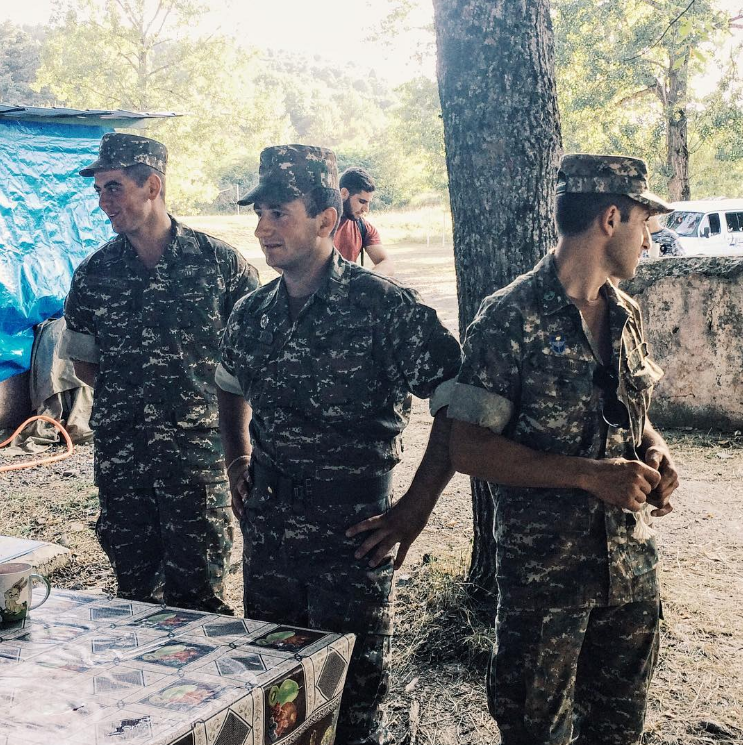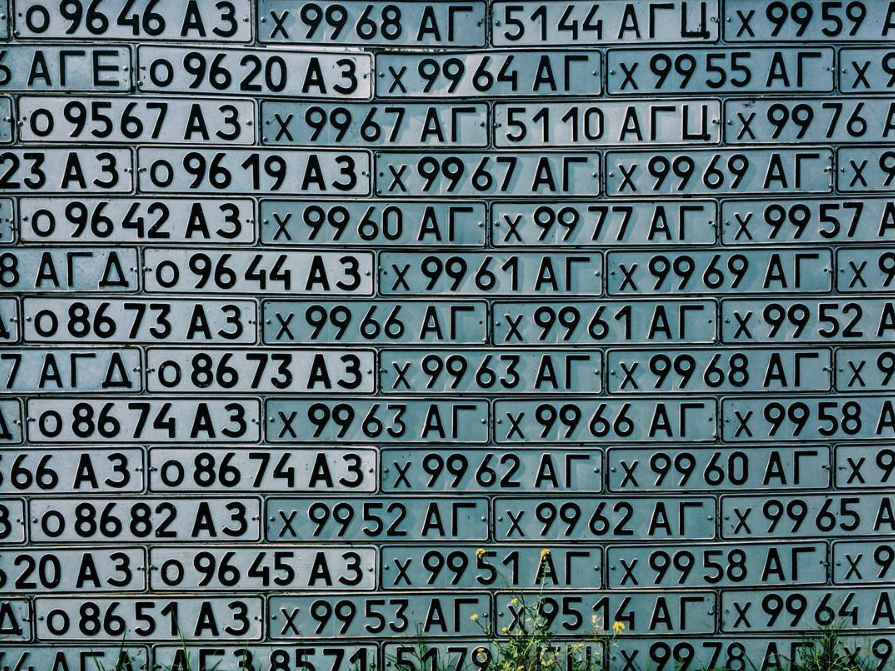The latest agreement coming out of the St. Petersburg meeting between Presidents Serge Sarkisian and Ilham Aliyev overseen by President Vladimir Putin is that the number of observers and sound monitoring systems will increase on the Line of Contact (LoC). This acceptance by President Aliyev that President Sarkisian has long supported will do little to change the dynamics along the LoC. We are dealing with an individual who is obsessed with a visceral hatred of Armenians and Armenian culture that he incessantly peddles to his people. President Aliyev will not rest until he retakes Artsakh (Nagorno-Karabagh/NKR) one way or another. As long as the countries represented by the Minsk Group co-chairs refuse to rein in his duplicitous behavior, tensions along the LoC will only heighten. Fearing no repercussions, President Aliyev continues to violate the ceasefire agreement, attacking our positions and harassing our villagers in the Talish region with random gunfire.
However, neither these incessant violations nor the killing of Armenian soldiers almost on a weekly basis should come as a surprise. What should come as a surprise is that we were caught flat-footed on April 2, when the Azeri military launched their full-scale offensive against Artsakh. It is inconceivable that the Azeri ground elements (infantry and supporting units) in staging areas close the LoC would have gone unnoticed. When facing an implacable enemy, any activity that rises about the necessary should be cause for concern. To suggest that the Azeris commonly maneuver troops and tanks close to the LoC without attacking is a fool’s expectation. More than likely, the intelligence was available and we were aware that unusual activity was taking place close to our positions. This leaves us to conclude that there was a failure within the command structure to act upon this intelligence. This is a failure of command that could have easily led to an Azeri victory. Is it necessary to remind ourselves that we are engaged in a struggle for survival that will determine the future of Armenia for decades to come?
Keep in mind that about 80 percent of our people in Artsakh live within 20 miles of the LoC. There is precious little space for our units to fall back, regroup, and prepare to launch counterattacks. Or to be replaced or augmented by units held in reserve. Unfortunately, we were surprised by a failure within the command structure that allowed the Azeri to over-run our positions at both the northern (Martakert) and southern (Martuni) sectors of the LoC. It was only due to the dedication and moral strength of our soldiers that prevented the Azeri from exploiting their initial successes. Just think of our vulnerability to a future unprovoked offensive if the Azeri had been able to maintain positions 10, 12 or more miles inside Artsakh. How about our displaced villagers who would have placed a very heavy burden on Stepanakert and possibly make for chaotic conditions as we prepared to mount a counteroffensive. As it was, the Azeri advance was contained and ultimately pushed back to the LoC at an unnecessarily high casualty count. Unfortunately, the Azeri were able to seize and occupy a small piece of terrain in Martuni.
And what was the response of the Minsk Group co-chairs to this unprovoked savage attack on Artsakh that lasted from April 2 to 5? As usual, there were more vacuous comments reminding both sides that they should refrain from escalating tensions along the LoC. There was no admonition of Azerbaijan for their gross violation of the ceasefire agreement. Neither was there any condemnation of the verified, not alleged, atrocities committed by the Azeri military against Armenian soldiers. Finally, no mention that Azerbaijan should evacuate the territory, small as it might be, that it seized in Artsakh. Evidently, war, to the contrary, does have its rewards.
If the Azeri were not enough to contend with, we are confronted with enemies from within. The Yerevan government brought charges against several high-ranking officers—a general and two colonials—for fraudulent activity affecting the procurement and likely the maintenance and availability of military assets. Fraudulency is endemic in Armenia, a legacy of the soviet years. However, when this moral rot is found within our military—the guardians of our nation’s security—we are facing an enemy more dangerous than the Azeris. Hopefully the investigation will determine if there were others within or outside the military who may be involved. It should also be determined whether this fraudulent activity compromised the ability of our soldiers to carry out their duties during the four-day war. We cannot continue to rely solely on the valor of our young men to defend us on the front lines without providing them with the military assets they require.
Can it get worse? Unbelievable as it may be, the answer is yes. In February 2016, about six weeks prior to the four-day war in April, the Deputy Defense Minister for Armenia, David Tonoian stated at a conference of the Organization for Security and Co-operation for Europe (OSCE) that in a move “…to alleviate confrontation…a deterrence system will be developed along the Line of Contact.” After some 20 years facing a hostile Azerbaijan intent on retaking Artsakh, with their violations increasing in number and intensity during each succeeding year since the initial ceasefire agreement, Armenia finally decided to develop a deterrence system along the LoC. Wasn’t this kind of late in the game to make that decision? The best defense has always been a deterrence system that causes the enemy to think long and hard about the consequences should he attack. Evidently, President Aliyev was not deterred by this announcement as the four-day war attests. Nor was he ever deterred by the “threats” of retaliation by Armenian officials in response to the numerous Azeri violations that have constantly taken place along the LoC.
The statement by Armenian President Serge Sarkisian, that if Azerbaijani military action continues and escalates along the LoC Armenia will recognize the independence of Nagorno-Karabagh, was made several times in the past without lessening the number or intensity of the attacks launched against Artsakh. Let us hope that this threat is not part of our announced deterrence system to prevent Azerbaijan from attacking Artsakh because it raises a valid question: What must the level of escalation be before President Sarkisian recognizes Artsakh? And what guarantee is there that when this escalation by Azerbaijan reaches whatever that magic level might be to trigger this option, there may not be a defendable Artsakh for President Sarkisian to recognize?
Finally, the most worrisome of the many concerns we have is that the principal nations pressing for a resolution of the present conflict have completely ignored Artsakh’s declaration of independence. For some years now Artsakh has exhibited the substantive attributes that are normally expected for de jure recognition. Recognition has not been extended because the principle of self-determination that supports Artsakh’s declaration of independence runs counter to the Azeri claim of territorial integrity. Unfortunately, this claim by Azerbaijan has been supported—up to this juncture—by the countries represented by the Minsk Group co-chairs. With respect to this impasse, we have conducted an absolutely abysmal public relations program presenting the background of the conflict and in defining the issues involved.
International experts are required to make our case. For some 70 years, our people in Artsakh were separated from their motherland and forced to live within the political jurisdiction of Azerbaijan, a hostile neighboring soviet republic. Until the Armenian minority declared their independence in 1991, when the Soviet Union imploded, they endured economic, political, and cultural discrimination and harassment by the Azerbaijani government. Not only is the principle of self-determination a valid foundation for Artsakh’s declaration of independence, support for their action should be drawn from the evolving principles of remedial secession and the doctrine of Responsibility to Protect (R2P).
Little has been done to justify Armenia’s invoking the R2P doctrine to protect its compatriots living in Azerbaijan from a developing genocide. The pogroms in Kirovabad (Ganja) and Sumgait (1988), Baku (1990) and Maraga (1992) and the indiscriminate shelling of Armenian civilians in Stepanakert during the war initiated by Azerbaijan required Armenia to intervene. The R2P doctrine refers to the responsibility of a government to protect its minorities from internal harm. However, when that harm to the minority Armenians came from the government of Azerbaijan itself, then the Republic of Armenia, assuming its humanitarian obligation, invoked the R2Pdoctrine to intervene to protect its compatriots from a genocide that was in the making. Given this scenario, the charge by Azerbaijan that Armenia invaded their country is a specious claim. It is time to enlist the aid of recognized experts in the field to support Artsakh’s bid for de jure recognition. We cannot rely on the current process or on supposedly sympathetic nations to protect our interests. It would border on incredulity if we had to be reminded that the loss of Artsakh would condemn Armenia to a future no brighter than the present. At stake is our survival as a nation with unlimited potential.
Source: Armenian Weekly
Link: The Four-Day War and Other Serious Concerns


